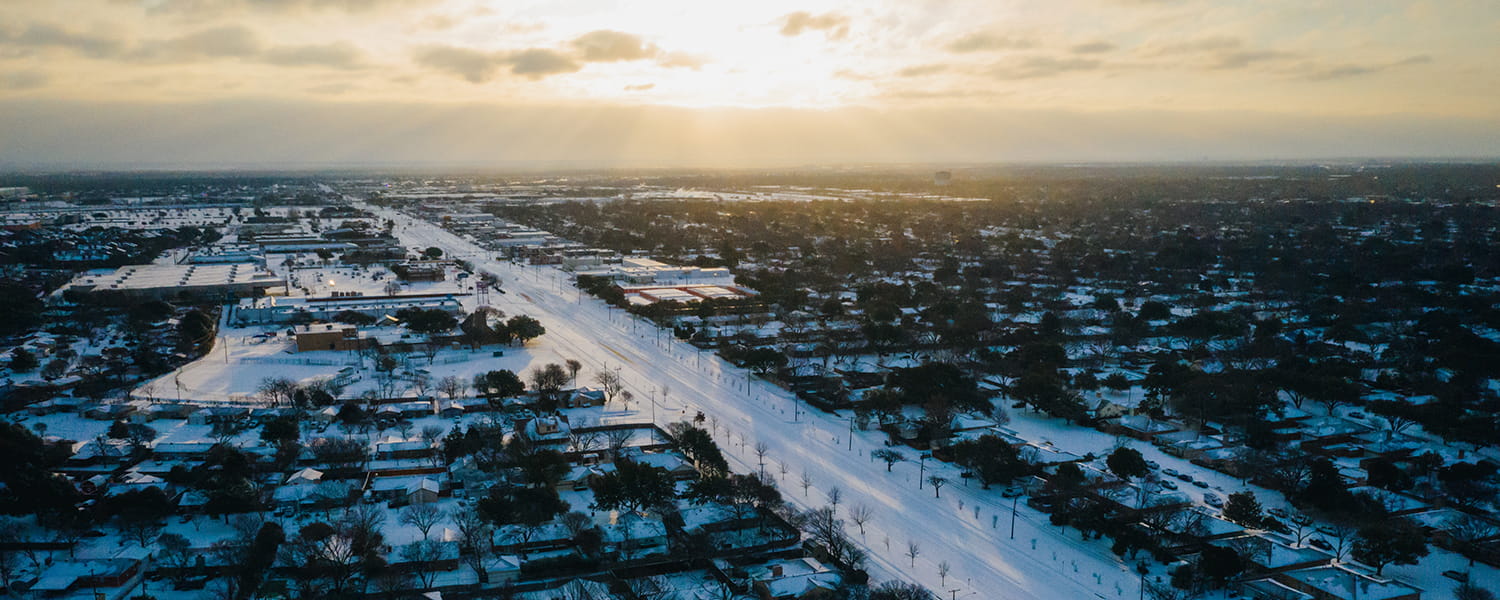When asked about the severity of gas shortages, and why the Texas gas plants couldn’t get enough gas from the network to generate electricity, Joshua Rhodes, an energy researcher at the University of Texas, was quoted by the Austin American Statesman stating, "The whole system isn't really set up to deliver what we're demanding of it. The major difference between what happens in the summer and what's happening now is competition for natural gas. If too many people are trying to consume natural gas it can depressurize the lines and if that pressure drops too low, they're no longer able to operate.”
Moments before the failure of the grid, ERCOT instituted its highest energy emergency alert. It called on utilities statewide to begin controlled blackouts. These controlled outages occur when utility companies need to intentionally turn off parts of the grid. Often referred to as ‘rolling blackouts,’ they are a last resort to prevent a total loss of the entire system.
As a result of rolling blackouts in Texas, 4.3 million households and businesses lost all power.

Beyond the freeze
The outages and freezing conditions will have consequences for some time. Boil water advisories from authorities remain intact. FEMA is releasing aid to businesses and residences for burst pipes and damaged machinery. Dozens of people have died. And many are suffering from carbon monoxide poisoning and other indirect impacts from the disaster.
What’s more, food shortages may also be felt across Texas because of the impact the outages and storm had on farming and agriculture. And industry, including Texas’s largest oil refineries, is facing what could be weeks of operational downtime as it fixes broken equipment. The impact on oil supplies and gas prices across the US is still unknown.
The outage will likely have long term implications on Texas’s natural gas recovery and cost. Liquified natural gas (LNG) for export has also ground to a halt in Houston, the world’s third largest LNG export hub. This has suggested global impacts on the supply and price of natural gas.
Operators have been working around the clock to minimize storm damage and keep power plants operational.
The entire experience has brought home the importance of improved extreme weather protection, resilient energy systems, and strong emergency operations protocols.
Distributed energy systems might have kept the lights on
Enchanted Rock, a Texas-based Microgrid firm, has approximately 200 microgrids across the state. It reports that 130 of their microgrids supplied energy to the grid during the Texas outages. Its customers were commercial stores providing essential food and medical supplies, and assisted living facilities.
Not only did microgrids keep the lights on, they were affordable. Even when ERCOT’s wholesale power prices surged to over $9,000/MWh.
But the resilience of distributed energy systems depends on its ability to secure fuel. To secure natural gas for its systems, Enchanted Rock credits its good supply contracts, ability to take gas at low distribution volumes, and the Texas Railroad Commission’s decision to give generators a priority position for natural gas behind homeowners.
As the volatility increases, the insurance policy distributed energy systems offer may increasingly pay dividends in today’s power markets. Particularly with their ability to participate in market programs such as demand response, save on power bills, and provide resilience in all weather conditions.
More microgrids will also help community resilience. When powered by microgrids, critical facilities such as hospitals, aged care facilities, pharmacies and fire houses take demand off the grid, reducing the stress on the community.
The financial impact the forced shutdowns caused on the hydrocarbons, manufacturing, refining and chemicals industries may encourage industry players to invest in site-base microgrids. Or, group together at scale to form industrial hub-based distributed energy systems. These could provide insurance against future extreme weather events, while allowing the industry to evolve its energy mix.
Where does the grid go from here?
Distributed energy systems containing customer-scale microgrids can be more reliable than a large centralized power plant. They allow people and organizations to take control of their energy generation, providing a high level of certainty during unpredictable weather events. However, distributed systems owners must consider what insulation, de-icing, and weatherproofing they need as the weather becomes more unpredictable.




